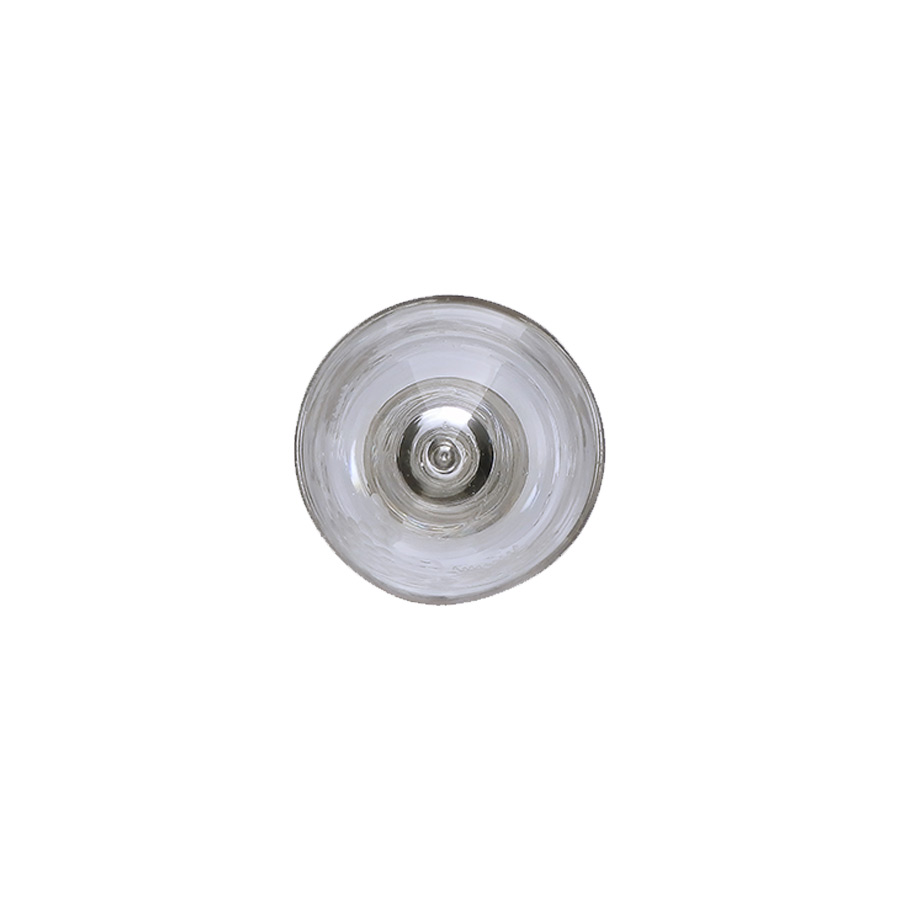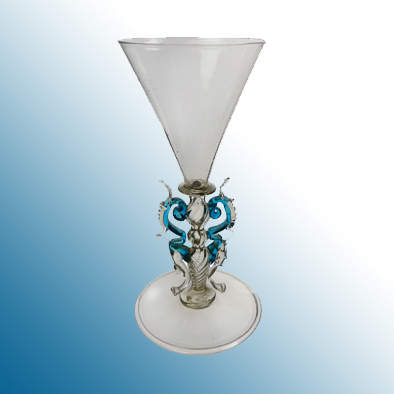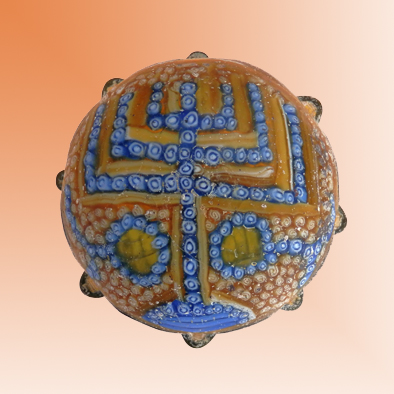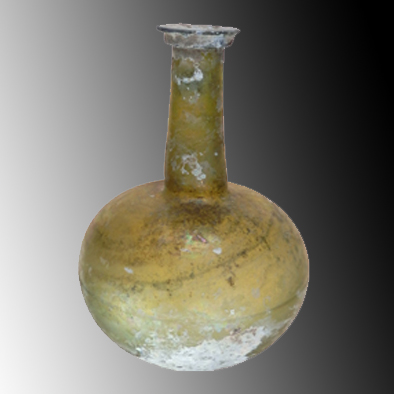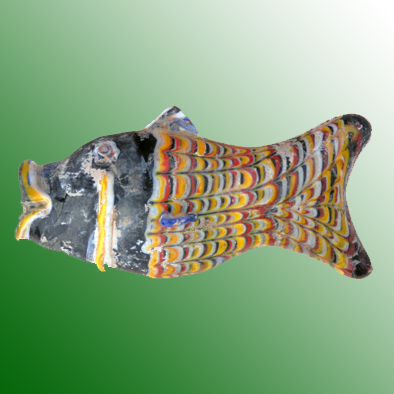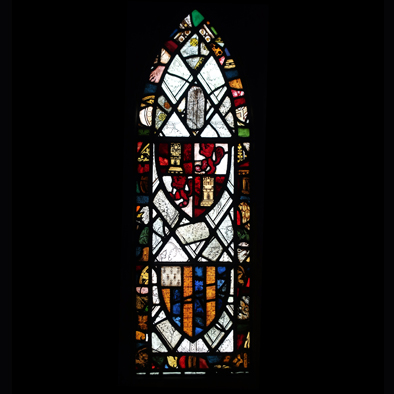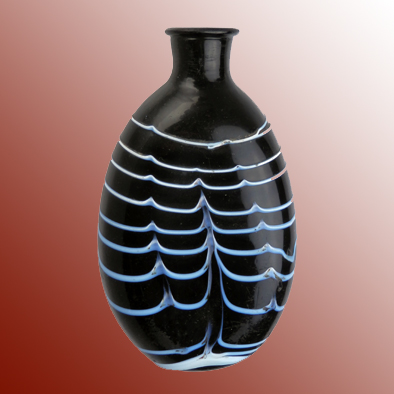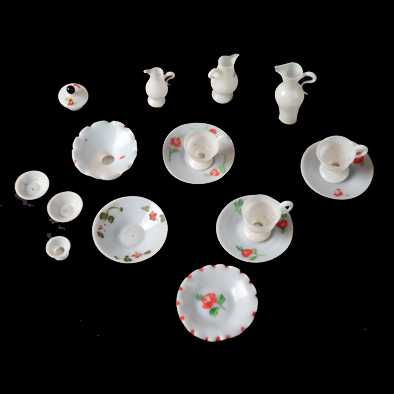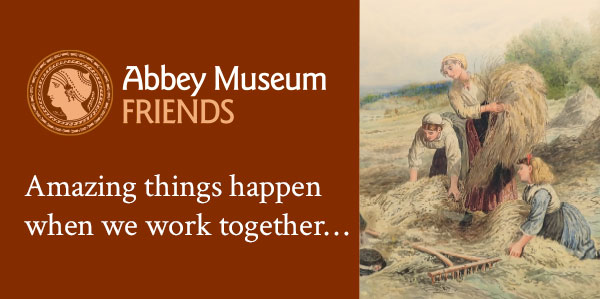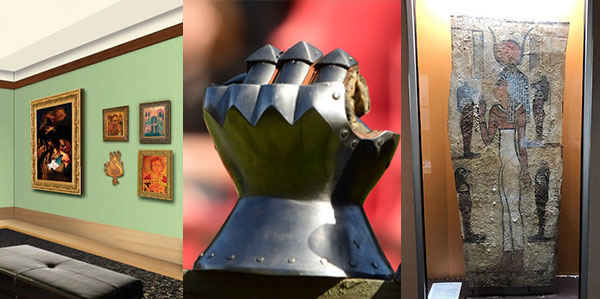Georgian wine glass
- W01727
- Abbey Museum Case 12
- England
- c 1740 – 1750 AD
- H 100 mm bowl D 55 mm
This Georgian wine glass with an ogee-shaped (inverted arch-shaped) bowl is engraved with fruiting grape vines and a bird in flight. The stem has a knop with a tear-drop air bubble on top of a folded base. Called a balustroid stem it was named after the shape of balusters which are the vertical turned posts of a handrail. Collectors can date Georgian wine glasses by shape of the bowls, stems and bases.
The Georgian period was a high point in the history of English glassmaking and of all Georgian glass, wine glasses show the great artistry of the glassmaker.
The development of lead glass put England in the forefront of glass-making. Lead glass was far less brittle than previous glass allowing it to be engraved without cracking.
Social history is revealed in engraved Georgian glasses. Engravings expressed greetings and best wishes or success to a specific commercial venture such as a mill, a farm, ship, a specific town, a trade, guild or society such as Knights Templar, Freemasons, Cycle and Hunt Clubs. Often glasses were engraved with the name of the owner. Some such as Jacobite glasses included subversive political symbols.
Botanical motifs, as in this example, were popular. The engraving often indicated the use of the glass with ale goblets decorated with hops and barley whereas wine glasses often depicted fruiting grape vines.
Drinking was a huge part of Georgian dinner parties for the wealthy and extravagant glasses were used to impress guests and emphasize the status of the family.
Georgian wine glasses are much sought after and widely collected. They all have stories to tell, from the distinctive bowls and stems to the symbolism of the engravings. Enthusiasts collect them for many reasons: for their beauty and style, as a reflection of Georgian social history, for investment purposes or just because wine tastes so much better in a special glass.
Where is it?
This artefact is on display now in case 12 titled ‘Luxury in Glass’, featuring glass from 1600-1850AD. You may go back to the Exhibition Home page and browse our virtual tour.






